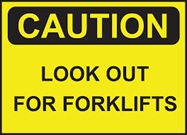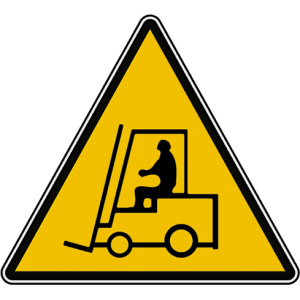Classic Forklifts Pty Ltd becomes Classic MLA

Classic Forklifts Pty Ltd becomes Classic MLA - Featured in the Gold Coast Bulletin.






The blitz is part of SafeWork’s ‘Take forking seriously’ program aimed at reducing deaths and injuries from forklifts and will see inspectors visit Sydney businesses to check they are meeting safety and licensing laws.
Between July 2014 and July 2016, 1,355 workers were injured in forklift incidents, which tragically included three fatalities, and cost the NSW workers compensation system more than $30.5 million.
Executive Director of SafeWork NSW, Peter Dunphy said too many workers were being injured and killed in incidents involving forklifts.
“Despite the inherent dangers of forklifts in the workplace, we strongly believe incidents can be reduced,” Mr Dunphy said.
In March 2018, inspectors checked that Sydney businesses are complying with safety and licensing laws as well as outlining some of the support available to improve forklift safety.
During 2017 four NSW businesses were prosecuted by SafeWork NSW and fined a total of $835,000 for incidents where workers were injured or killed by a forklift.
Truck driver, Rami Eayla suffered a fractured leg when he was struck by glass panels that were not adequately restrained on a forklift operated by an unlicensed forklift driver at City Projects Pty Ltd.
Mr Dunphy said businesses should have a traffic management plan that separates pedestrians and vehicles to help prevent incidents.
“A traffic management plan should include signage, ‘no go’ zones, use of pedestrian walkways, and exclusion zones during loading and unloading.
“Businesses should also ensure forklift operators have a current and valid licence, and always wear a seat belt.
“At the end of the day, safety is everyone’s responsibility. All workplaces have an obligation to help prevent more workers from being injured or killed on the job."
MLA Holdings takes forklift safety seriously. That is why we agree that all forklift operators must have acurrent and valid licence and always wear seat belts. MLA encourages businesses to have traffic management plans to ensure forklift operator and pedestrian safety.
MLA FleetControl is a fleet management system that restricts the use of equipment to only authorised
operators.
For further forklift safety information contact MLA Holdings on 131 652 or www.mlaholdings.com.au.Information for this article was sourced from www.safework.nsw.gov.au.
Download PDF here


the operator not engaging the parking brake, or not engaging the parking brake sufficiently;
the vehicle being left in gear when exiting the vehicle;
not parking on a level surface;
inadequate inspection and maintenance of the braking system;
Inadequate design integrity of interlocked braking systems, i.e. the brakes can be intentionally or unintentionally released by the operator’s actions;
loads added to or removed from a vehicle that is supported by stabilisers /outriggers on an inclined surface;
forces imposed by the movement of parts of a vehicle supported by stabilisers or outriggers on an inclined surface;
failure of a component within the braking system;
Action required - operators
park the vehicle on level ground. Where it is not reasonably practicable to park the vehicle on level ground, be aware of the limitations of the vehicle including the maximum slope of the supporting surface and what to do when parking on a gradient;
always apply the parking brake when exiting the vehicle;
chock the wheels of vehicles and trailers before conducting inspection or maintenance activities;
Action required – persons with management or control of plant
ensure the vehicle is inspected and maintained in accordance with the manufacturer’s recommendations;
be familiar with the components and limitations of the braking system;
consider the implementation of aftermarket controls that minimise the risk of uncontrolled movement of vehicles;
develop site specific parking locations and procedures in consultation with workers;
ensure your workers have the necessary training, experience and supervision to identify hazards to control the risks associated with the uncontrolled movement of vehicles;
routinely monitor and review all control measures;
MLA Holdings can provide further operator protection from uncontrolled movement of vehicles. Mitsubishi forklift trucks series now feature an Integrated Presence System (IPS) to minimise accidents caused by remote human error. The IPS focuses on immobilising the movement of the forklift truck and its hydraulic functions when the operator leaves their seat and sounding an audible alarm if the Park Brake is not applied.
Information for this article was sourced from www.safework.nsw.gov.au. For further forklift safety information contact MLA Holdings on 131 652 or www.mlaholdings.com.au.
Download PDF here

Look around you. Virtually everything that you see has at one point been moved by a forklift, whether it be its components or as a finished product.
Look around you. Virtually everything that you see has at one point been moved by a forklift, whether it be its components or as a finished product.
To most people, forklifts are the invisible muscle in the production chain, so not surprisingly we can overlook how new technology is delivering on efficiency, safety and sustainability.
A perfect example is the application of new generation Lithium-ion (Li-ion) batteries, which we’re more familiar with in mobile phones and laptops.
For over 100 years, lead acid batteries have been the mainstay of the world’s transport industries, and they have been successfully deployed in forklifts since the industry’s inception in the 1920s.
Now, Li-ion batteries have reached our industry, offering compelling advantages. And we are pleased to announce that Li-ion powered pallet movers and stackers are available in Australia thanks to MLA Holdings’ exclusive dealer partnership with Noblelift.
This giant of the industrial equipment manufacturing sector has a reputation for pursuing technical innovation, sustainability and excellence. One outcome of its heavy investment in research and development is the pedestrian range of Noblelift machines incorporating Li-ion batteries.
Thanks to their Li-ion batteries, these machines offer valuable advantages over traditional lead acid battery alternatives, including rapid charging, longer run time, zero maintenance, improved workplace safety and absence of emissions.
They have several advantages in any industrial setting, and are unquestionably a perfect fit for sensitive industries, such as food and pharmaceuticals.
Advantages of Lithium-ion Batteries
|
MLA has a full range of Noblelift Li-ion pedestrian operated machines available.
The smallest in the range of Li-ion powered pedestrian pallet movers is the PT12Li.
It is the ideal choice for pallet transportation over short-distance or in confined spaces. With its environmentally-friendly Li-ion battery, it is especially suitable for the food, chemical, and pharmaceutical industries where clean working environments are paramount.
The agile PT12Li excels in performance and reliability. With a capacity of 1.2T, this ergonomic pallet mover uses core components from world leading brands, allowing for easy maintenance and reliable performance. CAN-bus (Controller Area Network) technology and the safety of a low positioned tiller that allows for a small turning radius, makes the PT12Li a perfect match for confined spaces.
Its other advantages include the capacity for “opportunity charging” with no risk of battery damage occurring. This means a battery can be charged during breaks and other down times, eliminating the need to swap batteries in and out of machines. Li-ion batteries delivers substantially longer run times, up to five times greater than lead acid batteries, and they don’t contain acid or require water, so are 100% maintenance free.
The biggest machine in this range is the PT16L-25L series with a capacity of up to 2.5t and is the first choice for truck loading and unloading as well for pallet transportation on short distances.The PS14 RP Reach Stacker comes with a high-performance AC drive system, electric power steering and all lifting and travel options. These combined make the total logistics performance of this forklift impeccable.
While the initial purchase cost of Li-ion battery machines is higher than for forklifts with traditional lead-acid batteries it remains a smart investment considering the longer run times, improved operator safety and increased productivity through rapid charging.


A combined effort from operators, pedestrians and supervisors is needed to ensure that a separation of forklifts and pedestrians is achieved. Supervisors must ensure that employees observe exclusion zones and follow safety procedures at all times. Do not wait until an injury or death occurs at your workplace before separating pedestrians and forklifts. All forklifts supplied by MLA Holdings are fitted with audible and visual warning devices. Options such as cameras and speed-limiting devices are also available.
Information for this article was sourced from www.workcover.nsw.gov.au and www.safeworkaustralia.gov.au. For more information on effective traffic management plans contact MLA Holdings on 131 652 or www.mlaholdings.com.au.
Download PDF here


It is a short process that will only take a few minutes, a few important minutes that could prevent serious injury and even death. The importance of the forklift pre-start checklist system is undeniable; it helps ensure your safety and the safety of those around you.